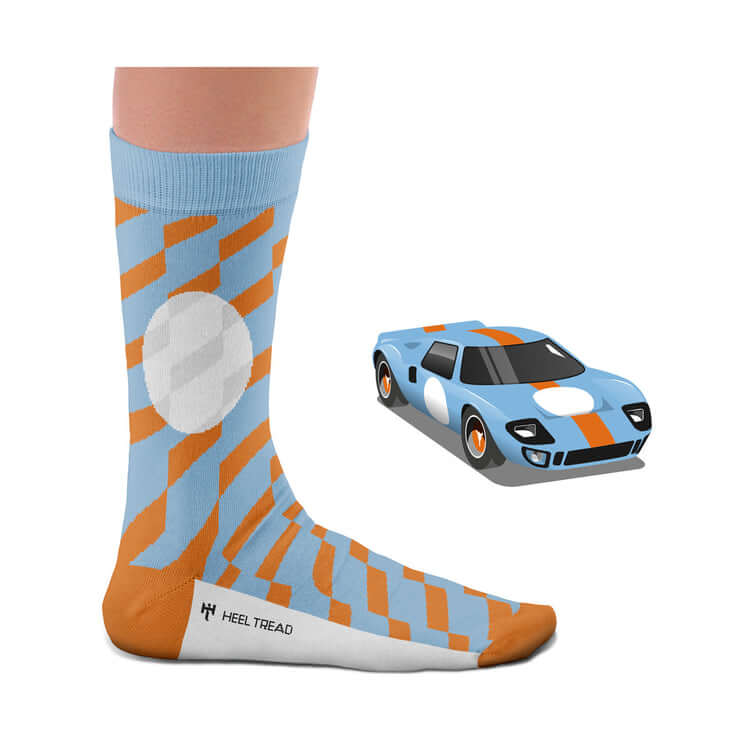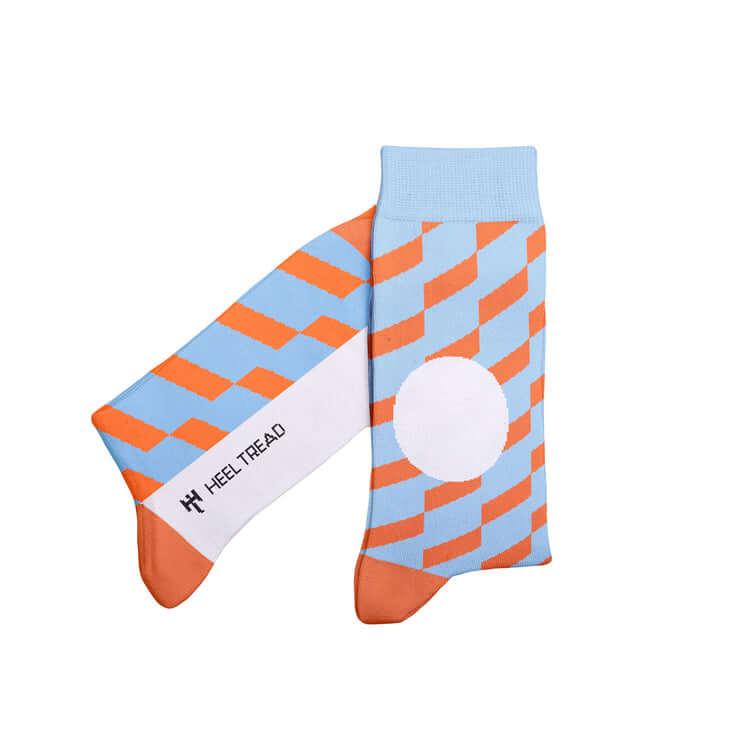Heel Tread
GT40 socks
GT40 socks
Couldn't load pickup availability
In the 1960s, a rivalry between two titans of the automotive industry, Henry Ford II and Enzo Ferrari, once one of the great legends of racing, laid the foundation for all mid-range supercars.
A new design for an old favorite.
During the first half of the 1960s, Scuderia Ferrari dominated Le Mans and acquired an indelible patina of excellence and robustness that was the envy of the entire industry.
Despite its motorsport successes, the Ferrari company struggled with financial difficulties, and in 1963 Henry Ford II approached Enzo about buying the Italian marque. Talks ended abruptly when "Il Commendatore" realized that his Scuderia's victory was an essential part of the deal. An angry Ford instructed his racing department to develop a machine that could beat Ferrari - "OK, then we'll kick his ass," as he put it - thus initiating one of the greatest feuds in motorsport history.
But despite all the motivation, Ford had little real plan or racing experience to tackle such a monumental task, so they turned to Roy Lunn to start the new GT program based on the Lola GT.
In June 1963 he signed the GT40 MkI, a mid-speed racer measuring less than 40 inches tall, along with an idea for a circuit version. Apparently the cigar-chomping Ford executives were rebuffed at first sight. Bruce McLaren was hired as test driver, and in April they planned to take it for a spin on the track. They failed spectacularly at every outing, including the 1,000km at the Nürburgring and Le Mans. This led to a change in management. It seemed that Carroll Shelby and his relentless ambition were just what the project needed. The Cobra's 7.0-litre V8 and a new ZF gearbox were fitted. Also new is the addition of Ken Milles to the driver line-up.
At Daytona in 1965, the MkII GT40, with Ken Miles and Lloyd Ruby at the wheel, took its first victory and a month later a podium finish at Sebring. Although there were encouraging signs, the rest of the season was rather dismal, culminating in the ultimate fiasco at Le Mans, when all five GT40s failed to finish, leaving Ferrari with the overall win.
But then came 1966. And with it 1-2-3 victories at Daytona and (the controversial) Le Mans. Over the next few years, the GT40 won four of its six consecutive Le Mans appearances. And a series of other GT events around the world made Ford world champions for three consecutive years.
There were design flaws and mechanical defects. There were accidents. People died. But in the end, Ford had made his revolution. He had proven to the world beyond a doubt that the common man's car manufacturer could play with the elite and beat them.
Delivery time 3-5 working days
80% pure cotton, 17% polyamide, 3% elastane.
Seamlessly knotted, a sock that doesn't pinch anywhere.
Wash inside out (40°C/100°F max.). Do not tumble dry, iron, bleach or dry clean.
Share





